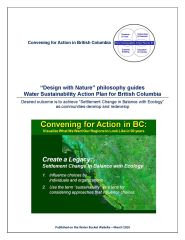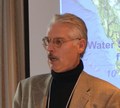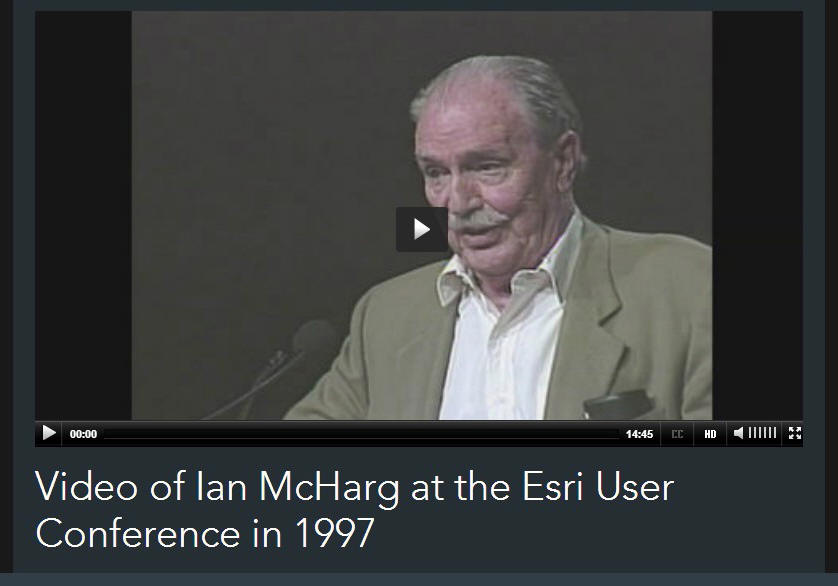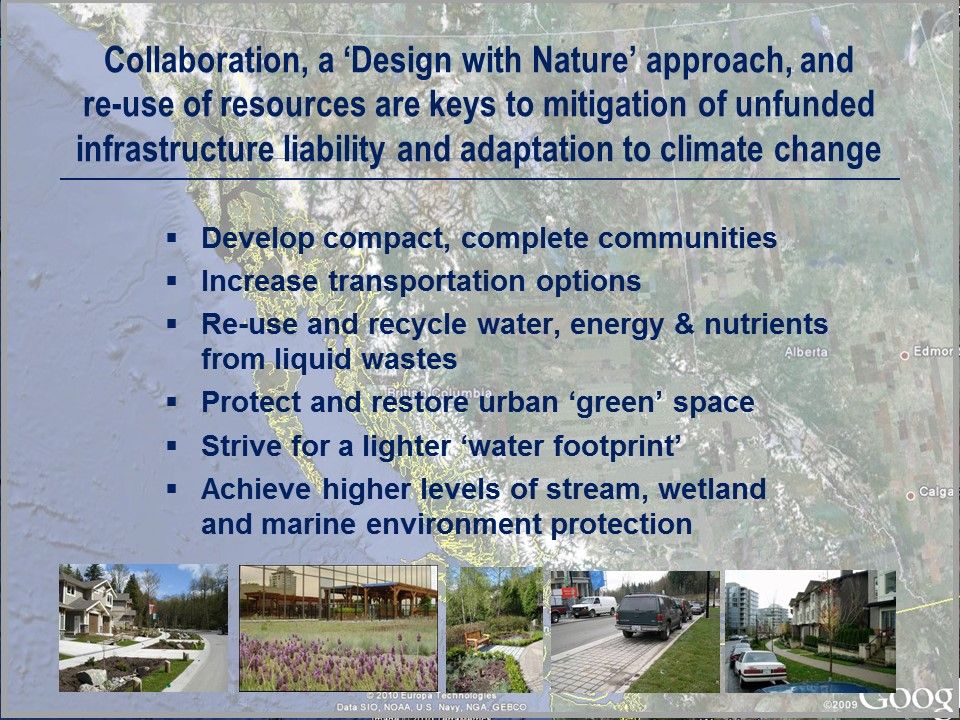Ian McHarg’s “Design With Nature” vision has influenced development of the Ecological Accounting Protocol
Note to Reader:
Renowned landscape architect, writer and educator Ian L. McHarg (1920-2001) was best known for introducing environmental concerns in landscape architecture. He was also instrumental in founding the original “Earth Week” in 1970. His 1969 book Design With Nature pioneered the concept of environmental planning.
Design with Nature is widely considered one of the most important and influential works of its kind. His premise is simple: “that the shaping of land for human use ought to be based on an understanding of natural process.” The ecological planning method developed by him to apply this theory was seized upon and used throughout the world.
ADAPT TO A CHANGING CLIMATE:
Designing with nature would ensure resiliency
Whole-Systems Thinking
Ian McHarg insisted we look at the many aspects of the entire system we are designing when building streets, structures, and cities; and instead of fighting against natural forces, design in harmony with them.
He showed how to do this, with modern tools, analytic overlays, GIS mapping, and a fact-based approach.
His philosophy was rooted in an ecological sensibility that accepted the interwoven worlds of the human and the natural, and sought to more fully and intelligently design human environments in concert with the conditions of setting, climate and environment.
 “So, I commend Design with Nature to your sympathetic consideration,” wrote Ian McHarg in 1991.
“So, I commend Design with Nature to your sympathetic consideration,” wrote Ian McHarg in 1991.
“The title contains a gradient of meaning. It can be interpreted as simply descriptive of a planning method, deferential to places and peoples, it can invoke the Grand Design, it can emphasize the conjunction with and, finally it can be read as an imperative.”
“DESIGN WITH NATURE!”
Designing with Nature in BC
 To understand where we are heading in BC, we need to understand where we have come from. Historical context is important.
To understand where we are heading in BC, we need to understand where we have come from. Historical context is important.
The ‘design with nature’ philosophy has become an integral and essential part of the green infrastructure, sustainable rainwater management and water sustainability branding in British Columbia.
Since 2004, the leadership team for the Partnership for Water Sustainability has championed the way-of-thinking and doing embodied in the phrase ‘design with nature’.
 “Designing with nature is efficient. It amounts to using income from natural capital rather than drawing down the resource,” states Tim Pringle, Partnership Past-President and Chair, Ecological Accounting Protocol Initiative.
“Designing with nature is efficient. It amounts to using income from natural capital rather than drawing down the resource,” states Tim Pringle, Partnership Past-President and Chair, Ecological Accounting Protocol Initiative.
“The key principle is that settlement and ecology are equal values and they must be as much in balance as possible for wellbeing of human and natural systems.”
“This condition is prerequisite for designing with nature and it supports better control of the life-cycle costs of providing infrastructure for the built environment.”
To Learn More:
Download “Design with Nature” philosophy guides Water Sustainability Action Plan for British Columbia, released in 2010.
Settlement Change in Balance with Ecology
“As communities develop and/or redevelop, the desired outcome in ‘designing with nature’ is that settlement change will be in balance with ecology,” emphasizes Tim Pringle.
“It is all about changing the land ethic.”
“The emphasis in using the Ecological Accounting Protocol would be on adaptive management design, rather than a prescriptive approach.”
“The essence of EAP is:
Optimum Infrastructure Design = Watershed Health.”
“Optimum implies preserving hydrologic integrity plus achieving best opportunity-cost outcomes in the long-term.”
Balance Requires Measurement
“A reality is that we manage what we can measure,” continues Tim Pringle.
“A disconnect in measuring what matters has resulted in an unbalanced approach when making development decisions.”
“The Ecological Accounting Protocol (EAP) is an economic tool to make real the notion of ‘watersheds as infrastructure assets’. Local governments would use EAP to develop a more complete financial picture.”
“A conceptual framework of analytical approaches is well developed. In 2018, the Partnership for Water Sustainability will be testing and adapting EAP through case study applications.”
“To protect watershed health, engineered infrastructure ought to fit into natural systems, rather than the other way around,” concludes Tim Pringle.

To view the video, visit: http://video.esri.com/watch/127/video-of-ian-mcharg-at-the-esri-user-conference-in-1997


